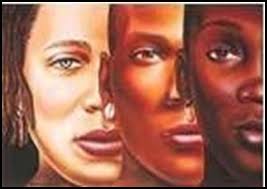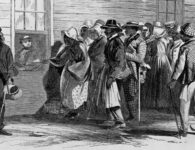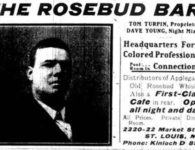In the United States, the dehumanization of Blacks by using the rhetoric of biological inferiority to describe dark skin planted its roots quite early in history. Not long after the first African had arrived in Virginia, legislators in 1622 passed laws against sexual relations between blacks and whites, citing them as evil and equivalent to bestiality. Whiteness was continually represented as good, and as a pathway to freedom. Blackness was associated to savagery, subordination, and bondage, making white the ideal to aspire to to escape such treatment. Because the idea of whiteness represented an agency that black could not hold at the time, it was an idyllic aspiration for oppressed blacks. This installation of the mindset Black was the antithesis of goodness, beauty, and intelligence, grew as slavery became entrenched into the fabric of America’s political, economic, and social ideology.
Despite being forbidden to have sexual relations with Africans, it was common for White slave owners to have sexual relations, whether they were non-consensual or consensual, with their female slaves. Many of these relationships resulted in mixed race offspring. The one-drop rule, which were laws that deemed any person with “one drop” of Black blood would be considered legally as Black, made anyone with African ancestry Black regardless of skin-tone or appearance of Eurocentric features. During slavery, skin tone was often used to grant privileges to slaves that looked closer to White. Lighter-skinned slaves were more likely to be in the house rather than the field, where the darker-skinned slaves were positioned, which helped instill the idea that darkness was inferior amongst many slaves themselves. When slavery was abolished, lighter-skinned blacks remained generally in a higher status than their darker-skinned counterparts, and class within black America was often tied to skin-tone. Thus, the hierarchy created during slavery that successfully created barriers between African-Americans continued to play a role in who had access to resources.
Today, colorism continues to play a role in who gets what and how blacks are treated in America, playing a complicated role in the lives of African-Americans today. Darker skin tone is commonly associated with various negative outcomes, such as lower levels of educational success and attainment, occupation and socioeconomic status, and even physical health compared to those of lighter skin tones. A phenomenon all over the world, colorism has a destructive and painful history in the United States.
Soure:
Norwood, K. (2014). The ubiquitousness of colorism: Then and now. In Color matters: Skin tone bias and the myth of a postracial America. New York: Taylor & Francis.
Russell, K., Wilson, M., & Hall, R. (1992). Masters, Slaves, Lovers. In The Color Complex. New York: Harcourt Brace Jovanovich.





















No comments